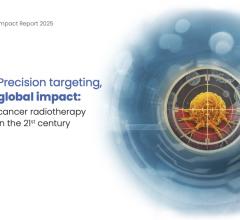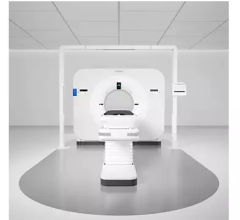
February 5, 2015 — A new study identifies several genes that together enable a lethal form of brain cancer to recur and progress after radiation therapy. The findings might lead to new therapies that target cancer stem cells, say researchers at The Ohio State University Comprehensive Cancer Center – Arthur G. James Cancer Hospital and Richard J. Solove Research Institute (OSUCCC – James), who led the study.
The work focused on the brain cancer glioblastoma multiforme (GBM). It investigated a subset of cancer cells within those tumors that behave like stem cells and that sometimes survive radiation therapy. To understand how those cancer stem-like cells survive irradiation, the researchers examined the cancer-related gene EZH2, which is unregulated in GBM and other cancers.
They discovered that in GBM stem-like cells – but not in other tumor cancer cells or in healthy body cells – EZH2 is regulated by a gene called MELK in combination with a second gene, FOXM1. The interaction of the three genes helps the cells survive therapy.
The findings are published in the journal Stem Cell Reports.
“Currently, GBM is treated surgically followed by radiation therapy and chemotherapy, but these tumors often recur, and patients generally survive less than two years, so we badly need new treatments,” says principal investigator Ichiro Nakano, M.D., Ph.D., associate professor in the division of neurological surgery and a researcher in the OSUCCC – James Translational Therapeutics Program. “Our findings suggest that MELK inhibitors can be applicable to brain and other cancers as a novel cancer stem cell-directed therapy.”
In earlier research, Nakano and his colleagues showed that MELK is highly expressed in glioblastoma stem-like cells, and that over-expression is correlated with poor patient survival.
For this study, Nakano and his colleagues used cells dissociated from GBM tumors, a mouse model and the roundworm Caenorhabditis elegans. Key findings include:
- MELK and EZH2 proteins occur together in a subset of tumor cells;
- Without MELK, GBM cells are more sensitive to irradiation; when MELK is restored, the cells become resistant to radiation;
- Recurrent GBM tumors have higher numbers of MELK- and EZH2-positive cells than newly diagnosed tumors;
- MELK and the oncogenic transcription factor FOXM1 form a complex that drives EZH2 expression;
- Levels of MELK, FOXM1 and EZH2 are strongly linked to patient prognosis.
“Taken together, our data suggest that MELK upregulation after irradiation promotes radiation resistance, and tumor development and progression,” Nakano says.
For more information: www.cancer.osu.edu


 November 04, 2025
November 04, 2025 









